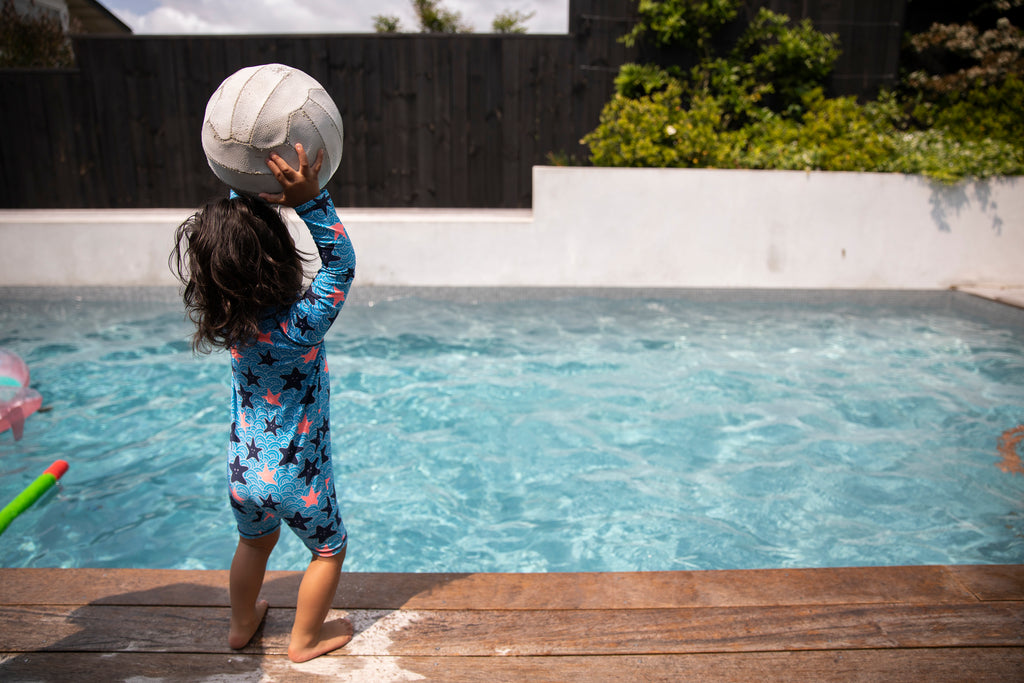We love this timely reminder from Safekids Aotearoa!
'Tis the sea-sun to enjoy the beautiful waters around Aotearoa🌞
Keep your tamariki safe at the pool, beach or lake with the golden rules to prevent drowning:
👨👧 Only let children in, on and around water when you are free to supervise them at all times.
📵 Eliminate distractions (especially phones)
⛱️ Keep within arm’s reach of toddlers so you can help them quickly if needed.
Drowning: 1 - 2 Years
How big a problem is it?
Small children are naturally inquisitive and an attraction to water is a normal part of their development. Water safety is important at any age, but especially if you have babies or toddlers. Each year in New Zealand, 8 children die after a drowning accident and 30 more are hospitalised. Around 4 children aged 1 - 2 years drown each year.
Who does it affect?
Babies and toddlers (0-4 years) are particularly at risk — they can drown quickly and silently in less than 5 centimetres of water and where you’d least expect it; in buckets, in the sink, in puddles and in standing water in ditches. Young children are curious, fast and because they’re a little top heavy, they can slip and drown in a matter of minutes. Here are things you can do to keep your kids safe around water.
Top Tips
At home
- Always keep an eye on your toddler in the bath and around water. If you need to answer the door or phone, wrap your child up in a towel and take them with you.
- Only let children in, on and around water when you are free to supervise them at all times, without any distractions (including your phone), and keep within arm’s reach of toddlers so you can help them quickly if needed.
- Always empty baths, buckets and paddling pools after use, and close the toilet lid. When emptying the bath make sure the plug or toys do not accidentally block the drain.
Outside the home
- To restrict access to water use four-sided pool fencing (1.2 metres high) with a self-closing, self-latching gate.
- Teach children from a young age how to be safe around water.
First Aid
- Your first priority is to get a drowning child out of the water as quickly as possible. If they aren’t breathing, place them on their back on a firm surface and start CPR.
- See the chart below at C for CPR for children under one year and CPR for children over one year
- Call 111 or ask someone to call for you if you have help there.
- Do not stop performing CPR until medical help arrives and takes over.
|
Follow Drs ABCD to start CPR D Dangers? Check for any dangers to yourself such as electricity or traffic. R Responsive? Check responsiveness by calling loudly and shaking the child's arm. S Send for help. Dial 111 and confirm an ambulance is on its way. Use the appropriate emergency number in other countries. A Airway. Open the airway by moving the head into a neutral position and lifting the chin. Do not tilt the head back too far. B Breathing. Look and feel for movement of the lower chest and stomach area. Listen and feel for air coming from the nose or mouth. C CPR. If the child is not breathing, start CPR - 30 compressions to 2 breaths. Put the child on a firm surface. Place 2 fingers of one hand (for a baby) or the heel of one hand (for a child) in the centre of the chest just below the nipples. Push down hard and fast 30 times in about 15 seconds (push down one-third of chest depth). Once you have completed 30 compressions (pushes) on the chest, breathe into the baby's mouth 2 times. Seal your lips around the baby's mouth and nose. For a child over 1, you may need to breathe into their mouth and pinch their nose closed. Gently puff into the child until you see their chest rise. Continue with the cycle of 30 chest compressions and 2 breaths until the ambulance arrives. D Defibrillator. Attach defibrillator as soon as available and follow prompts. |


Leave a comment